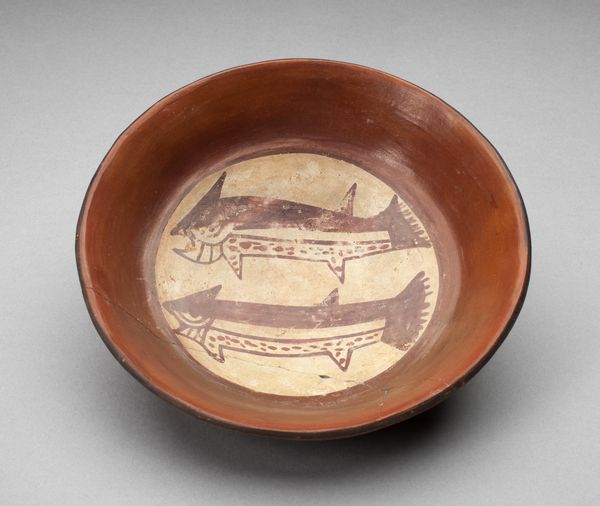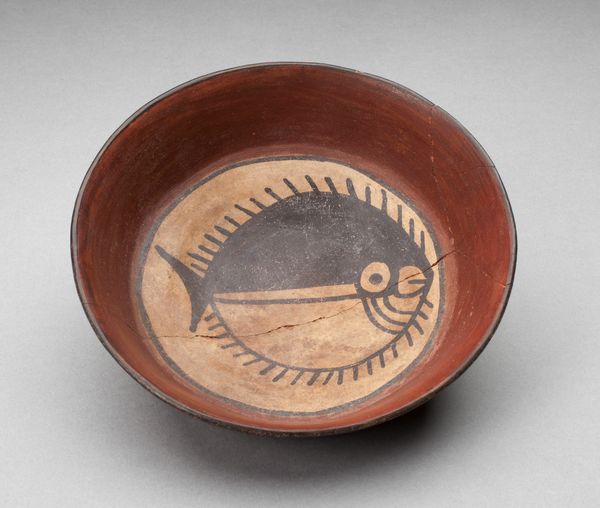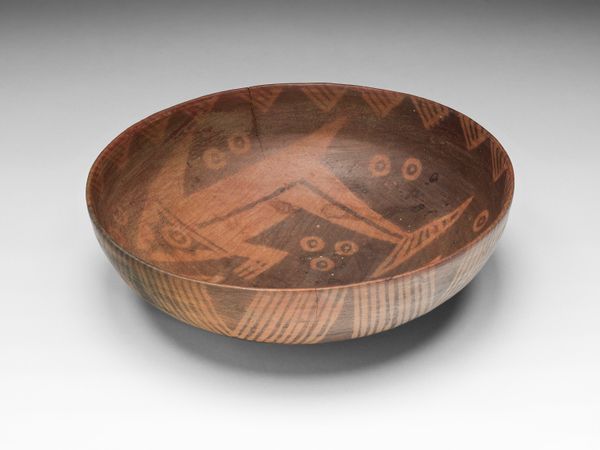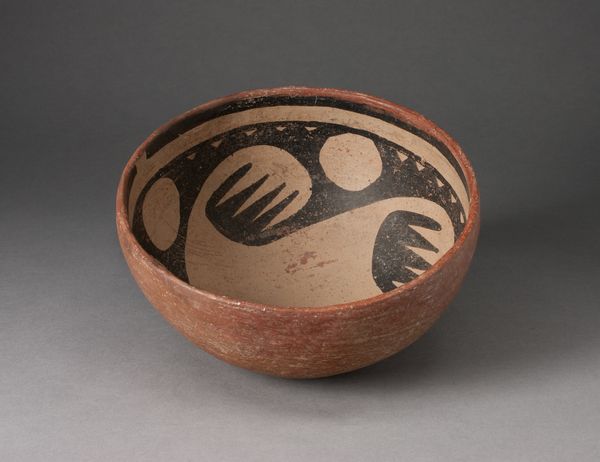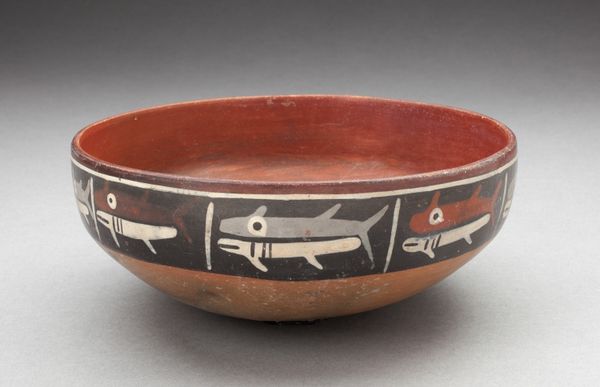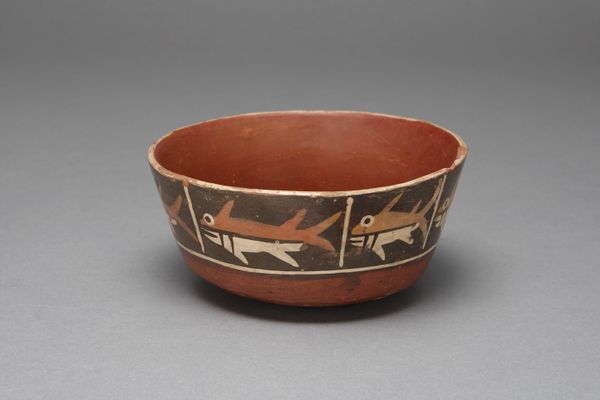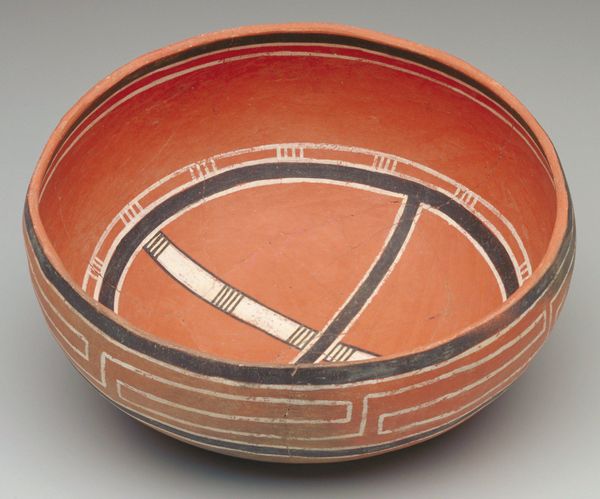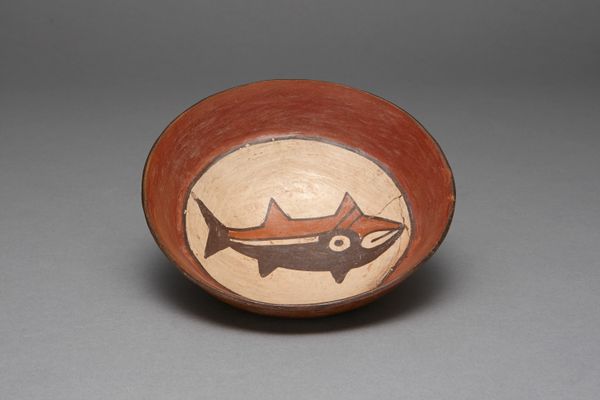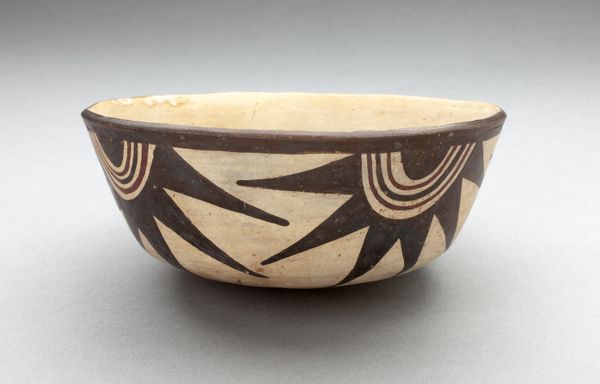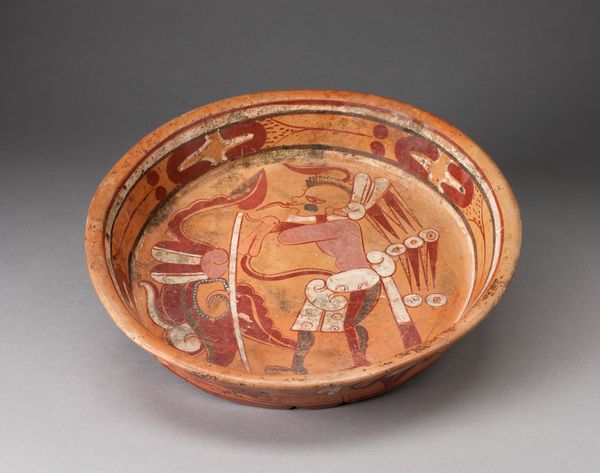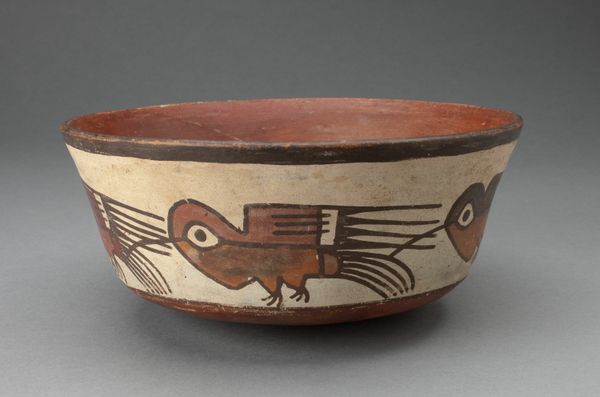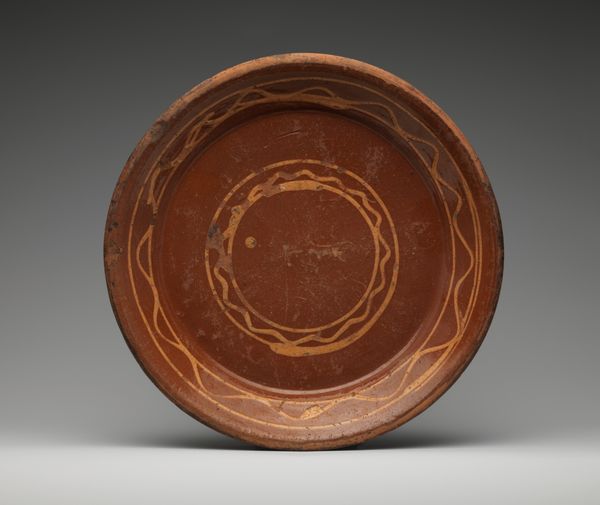
Plate Depicting a Pair of Fish or Sharks in Interior c. 180 - 500
0:00
0:00
ceramic, terracotta
#
pottery
#
ceramic
#
figuration
#
form
#
terracotta
#
indigenous-americas
Dimensions: 4.5 × 16.5 cm (1 3/4 × 6 1/2 in.)
Copyright: Public Domain
Curator: Welcome. Here we have a ceramic plate dating from about 180 to 500 CE, created by the Nazca people. It’s entitled "Plate Depicting a Pair of Fish or Sharks in Interior" and it's held in the collection of The Art Institute of Chicago. Editor: Immediately striking is the simplicity. Two stylized creatures float in a cream-colored space, starkly set against the warm reddish-brown of the plate itself. It’s minimalist, almost proto-modern. Curator: It is remarkably direct. The Nazca culture, flourishing in ancient Peru, had a deep connection to the sea, even though they lived in a desert environment. Marine life was a vital food source but also imbued with spiritual significance. Editor: Notice how the artist employs basic geometric forms. The bodies are simple tubes, and the fins are triangles, while the circular eyes hold complex patterns. There’s a clear intention to reduce these creatures to their most essential visual components. Curator: The choice of depicting sharks—if that is indeed what they are—speaks volumes about power and respect. Sharks were likely revered for their hunting prowess and their role in the ocean ecosystem. Perhaps they symbolize the connection between the Nazca people and the larger world. Editor: The contrast in hues – the light cream with the darker outlines, the red of the clay with that lighter inner field–creates a tension, visually reinforcing a duality or a formal dialectic between figure and ground. Curator: And of course, understanding these designs is difficult without considering their function. Were these plates used in everyday life, or reserved for special rituals and ceremonies? These are critical questions that we need to ask. Editor: Ultimately, regardless of original context, the clean, almost abstracted forms still resonate with a contemporary viewer. Curator: Absolutely. The lasting power lies in the blend of its historical narrative and powerful visual economy. Editor: I agree. It is an interesting case of form following survival.
Comments
No comments
Be the first to comment and join the conversation on the ultimate creative platform.
